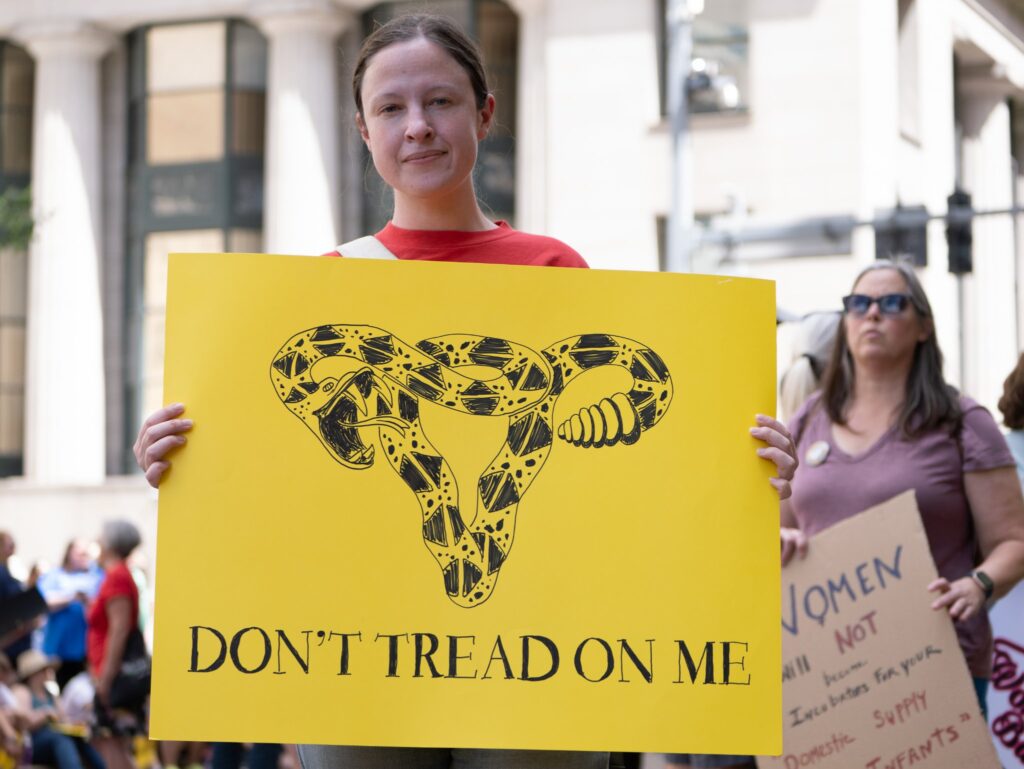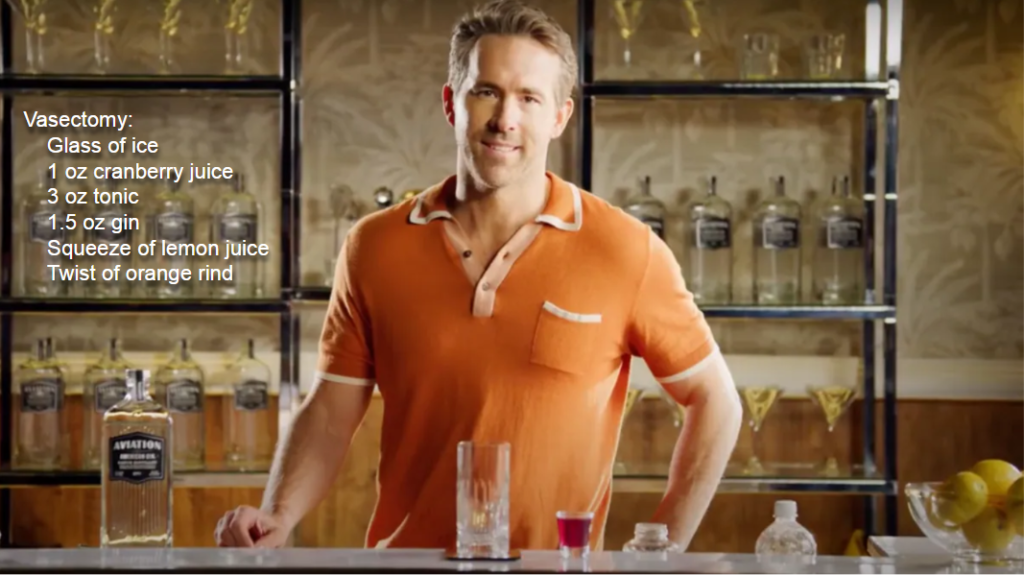Just in time for Father’s Day, we’ll be covering an oft-overlooked option for birth control, one that is straightforward, quick, effective, and results in very low impact to physical and environmental health: vasectomies. It has been a while since I’ve veered this far from what could be considered polite table conversation on this blog, so be aware that there will be personal anecdotes and detailed descriptions of body parts. In other words: abandon all squeamishness ye who enter here.
Impact of humans on our world (and vice-versa)
Let’s start off with a look at the impacts associated with having kids. Almost every report I have ever seen regarding the carbon footprint of lifestyle decisions puts procreation at the top of the list. The carbon footprint of bringing a new human being into the world absolutely eclipses other things like eating meat, driving gas-powered cars, and taking flights for travel.[1] One study out of Sweden identified an annual carbon footprint of as much as almost 60 metric tons of CO2 per child in developed countries.[2] Those carbon emissions are related to food, clothing, transportation, energy use, waste, and more.
I’m writing this post after attending a week-long conference about the oil and gas industry, so I am well aware that the actions of any individual with respect carbon footprint are virtually inconsequential in the grand scheme of our planet’s future compared to the actions (or inactions) of governments and fossil fuel companies. I am not advocating that people refrain from having children because of the carbon footprint, but I am saying that people should make whatever decisions work best for them, and if the carbon reduction of a child-free life makes them happy, great.

Image credit: [3]
I have previously written about dropping birth rates in the US,[4] and that trend can be a result of many factors. More couples are choosing not to have children, but there are also growing risks to fertility and reproductive health. For example, increased exposure to PFAS, phthalates, and BPA, as well as other endocrine disrupting chemicals, can contribute to decreased sperm counts, difficulty conceiving or carrying to term, or even developmental problems in utero that can lead to reduced fertility as an adult.[5]
All this is to say that we live in a chemical soup on an increasingly polluted planet, where our decisions contribute to public health factors, such as what pollutants we create and subsequently expose ourselves to. Continued short-sighted decision-making resulting in continued exposure to toxics that are harmful to human health and development may just mean that some of these decisions are out of our hands entirely down the road.
Certainly, recent news – between dropping sperm counts and the leaked Supreme Court decision on Roe vs. Wade this spring – has felt unnervingly like a real-world version of The Handmaid’s Tale.[6] Along with many other people, I’ve had very strong feelings about the entire situation, not the least of which was the potential loss of my bodily autonomy – at the hands of the party of “small government,” no less.
Another realization was that a low-level, but chronic, frustration has apparently been building for my entire adult life: the idea that responsibility for birth control – acquiring it, using it, bearing the physiological impacts associated with it, and shouldering the consequences when it fails – very often falls to women. It has also been my personal experience – through frank and honest conversations with friends – that most men are largely ignorant of how the female body works, how different types of birth control work, and the myriad physical and psychological stresses associated with having a uterus in our society.

Photo credit: Mark Dixon
Birth control methods and tradeoffs
A CDC survey of women aged 15-49 in the United States between 2015 and 2017 showed that among the roughly two thirds of women using contraception, female sterilization was the most prevalent method.[7] Of course, surgery associated with getting one’s tubes tied is incredibly invasive and painful, involves general anesthesia and sometimes an in-hospital recovery, comes with health risks (such as damage to the bowel, bladder, or major blood vessels), and can even be denied to women who have determined that they don’t want any (more) children.[8]
The pill (and other hormonal options, such as the shot, and the ring) made up 15.8% of the field, but they can often come with unpleasant side effects, including headaches and migraine, breast tenderness, weight gain, mood swings, and depression. Having been on and off multiple brands over the years, I can attest to all of the above. While the pill is generally safe for most females to use, there are increased risks of blood clots, high blood pressure, or hypertension, which can lead to heart attacks and strokes. Some research also suggests increased risk of some forms of cancer. Hormonal birth control may not be safe for people with a history of breast or endometrial cancer.[9]
Note: I am not going to elaborate on the possible impacts of hormones affecting wildlife in waterways, though it is a concern that has been raised in recent years. There are indications of endocrine disrupting chemicals leading to instances of intersex fish and frogs, but it is currently unclear if that is related to hormonal birth control or pollution from plastic, fertilizer, and other industry sources.[10]

Image credit: [11]
Long-acting reversible contraceptives, such as IUDs, represented the next group at 10.3% of the field. Having had three IUDs myself, I can speak to the general convenience of not having to take a pill every day, but also to the increased pain, cramping, and bleeding that accompanies them, as compared to a regular period. When I got my first one, I received a sobering briefing on why it was important not to make any sudden movements, no matter how much pain I felt (lest the doctor accidentally push the IUD through the wall of my uterus). I bled so much the first few days after insertion, I was convinced I had a uterine puncture, and my cramps were so bad that I couldn’t even stand. Christian was duly horrified that I was going through that much pain as part of a commonly accepted form of birth control. (Ultimately, I accidentally pulled that first IUD out of position with my menstrual cup, so it was painful AND ineffective.)
Next down the list were those using male condoms, at 8.9%. Now, certainly, if you’re going to make an environmental impact argument (as I have) regarding the plastic waste or carbon footprint associated with the use of condoms, that impact is vanishingly small compared with the impact of actually having a child, so one really should not feel guilty about using condoms when weighing the alternative (though I still do). However, it is important to note that from a “chemical soup” standpoint, condoms have some concerning associations: the majority of latex condoms include polyurethane or polyisoprene (plastics that don’t break down, but can degrade into microplastics); lubricants on condoms often contain parabens, and there are studies that have shown links between parabens and breast cancer;[12] and lubricants are also petroleum based, and I have written – at length – about the environmental and health risks of petroleum and petrochemical development.[13]
Another Note: I feel like it’s obvious, but I read so many articles reminding readers that condoms are important for protection against sexually transmitted infections, that it almost seemed irresponsible not to mention it here. Whatever decisions you make, be safe.
Another option
5.9% of the women in the CDC survey had a partner with a vasectomy. According to a 2015 report by the United Nations, the rate of men getting vasectomies in the US was about half of that in Canada and the UK. This simple and highly effective outpatient procedure is much more of a norm in other industrialized countries, but it has not become a mainstream birth control choice in the US.[14] Common misconceptions about the procedure are that it will affect sexual performance, damage sexual organs, increase risk of cancer or heart disease, or cause severe pain. All of these concerns are unfounded.

Image source: [15]
The procedure typically takes about 10 to 30 minutes and involves cutting the vas deferens, which is the tube that carries sperm from the testicle. Both sides of each cut can be tied or cauterized to seal the tube closed. The procedure is performed through a small slit in each side of the scrotum. Since it is outpatient surgery, the recovery time is fairly quick, with most patients experiencing some bruising, swelling, and pain for a few days. Risks of further complication include infection at the site after surgery, chronic pain, cysts, or fluid buildup, but those are very low.[16]
Men who have had a vasectomy will still ejaculate semen, but it will not contain sperm. A follow-up semen analysis 6-12 weeks after surgery will confirm whether the procedure has been effective, and they are considered to be the most effective method of preventing pregnancy, after abstinence. Although they are commonly considered to be easily reversible, that isn’t always the case, so reasonable certainty that you don’t want (more) kids is a good idea before signing up. Though spousal consent for a vasectomy is not a requirement (as it can sometimes be for female sterilization) it is important that you and your partner are on the same page because reversal success rates decrease over time: they start at about 75% up to 3 years after the procedure, but drop below 50% after 8 years, and less than 10% after 20 years.[17]
~
With all of that said, I hope you have whatever information and support you need to make the birth control choices work best for you, as an individual or part of a family. There is a lot of information I chose not to include for space purposes, but hopefully the reference list below will be a good start if you want to investigate further.
If you have a personal story you’d like to share, please feel free to do so below.
Happy Father’s Day (if you celebrate it), and thanks for reading!
[3] https://www.cdc.gov/nchs/products/databriefs/db327.htm
[4] https://radicalmoderate.online/dink-life-part-1/
[5] https://www.theguardian.com/society/2021/mar/28/shanna-swan-fertility-reproduction-count-down
[6] https://www.goodreads.com/book/show/38447.The_Handmaid_s_Tale
[7] https://www.cdc.gov/nchs/products/databriefs/db327.htm
[8] https://www.insider.com/a-woman-needed-husbands-consent-to-get-her-tubes-tied-2020-2
[9] https://www.medicalnewstoday.com/articles/290196
[12] https://theleaflet.org/home-1/safe-and-sustainable-sex-how-to-avoid-toxins-and-petrochemicals
[13] https://radicalmoderate.online/plastic-free-july-corona-edition-continued/
[14] https://www.healthline.com/health-news/why-men-in-us-dont-get-vasectomies
[15] https://www.thewrap.com/ryan-reynolds-aviation-gin-cocktail-the-vasectomy/
[16] https://www.mayoclinic.org/tests-procedures/vasectomy/about/pac-20384580
[17] https://www.nhs.uk/conditions/contraception/vasectomy-reversal-nhs/
0 Comments